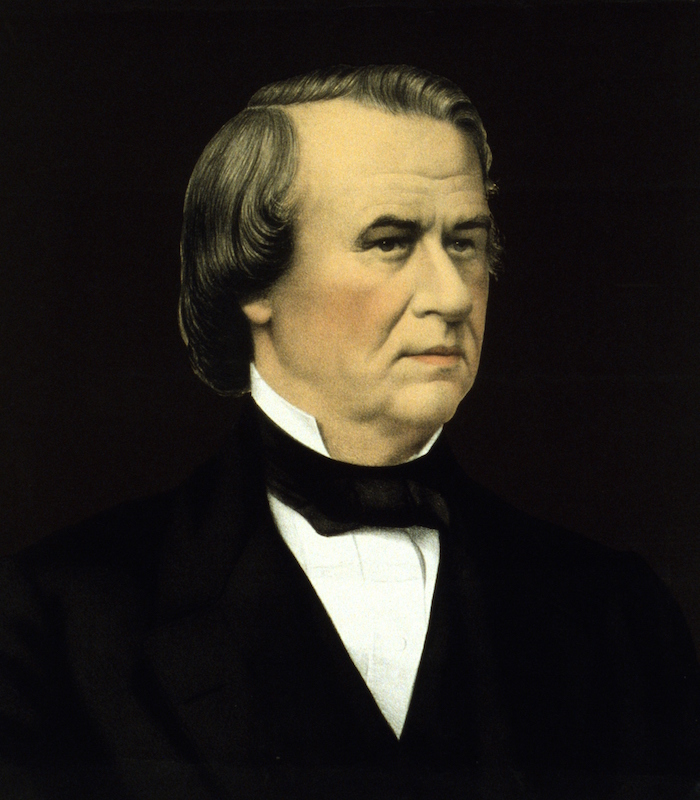
Wednesday marks the beginning of President Barack Obama’s final year in office. For previous U.S. presidents, this has been a time to sure up their legacy. With the public distracted by the electoral circus, lame ducks have little else to do than organize their papers, plan their presidential libraries and make a case to often apathetic audiences for their many and varied accomplishments.
President Obama clearly had this task in mind last Tuesday, when he delivered his final State of the Union address. Eschewing the usual laundry list of policy proposals, Obama reminded Americans of some of his signature accomplishments, including the Affordable Care Act, normalized relations with Cuba and a historic nuclear arms deal with Iran.
Obama would do well to remember, however, that what history remembers about a presidency is often unpredictable — and almost certainly beyond his control.
Just ask Andrew Johnson, America’s first post-Civil War president and, as the first President to be impeached, almost certainly one of its worst. His legacy, in recent years, has unexpectedly come to include his pet mice. The subject of a growing body of commentary, Johnson’s relationship with White House rodents — whom he wooed with flour and water during the dark days of his impeachment — is now part of his presidential lore. One writer has even suggested, no doubt tongue-in-cheek, that the president’s pet mice might figure prominently in an Andrew Johnson animated biopic.
In some ways, this development in unsurprising. Americans venerate the office of the presidency, even if they often despise its current inhabitant. But many are eager to consume stories that redeem and humanize the men who occupied the White House. Was Andrew Johnson a thoroughgoing white supremacist, even by the daunting standards of his day? Yes. Did he work tirelessly to restore ex-Confederates to political power after the Civil War? Absolutely. But he also did quirky, human stuff like befriending mice in an hour of loneliness, so — according to some — he must be relatable after all.
In other respects, however, the emergence of Johnson’s mice as part of his presidential legacy couldn’t be stranger. Mentioned fleetingly in the diaries of William G. Moore, Johnson’s personal secretary, the president’s mice were unknown to contemporaries, who were more concerned with Johnson’s impeachment proceedings and his obsessive efforts to bar African Americans from the merest semblance of civil and political rights.
In fact, it would take more than a century before Johnson’s mice entered public consciousness. This occurred in 1989. In March of that year, the Washington Post’s Roxanne Roberts mentioned Johnson’s mice in a piece on presidential pooch Millie Bush. And in July, historian Hans Trefousse published a definitive biography of Johnson – complete with a single, sentence-long reference to his rodent friends. Since then, the story has continued to appear and reappear – in the nation’s leading newspapers, in books of presidential trivia and minutiae, and on dozens of sites across the internet.
What does this story tell us? About Andrew Johnson, it says little. History is littered with dreadful people who were kind to animals. That Johnson refused to kill White House pests was surely scant consolation to the thousands of African-Americans who were butchered by white vigilante groups like the Ku Klux Klan during Johnson’s disastrous presidency.
With respect to presidential legacies, however, Johnson’s mice tell us a great deal. On leaving office, Johnson no doubt wished to be remembered as a staunch defender of states’ rights, white supremacy and the U.S. Constitution. His opponents, meanwhile, expected the outgoing president to be remembered as a stubborn, obstructionist bigot who squandered an opportunity to remake the South.
The wishes of both parties, in due time, would be granted. At the height of Jim Crow in the early 20th century, Johnson would be celebrated as a savior of the white South. And more recently, he has been excoriated as an enemy of black freedom. But he has also come to be remembered as something else entirely: a presidential curiosity.
A foe to so many of his fellow humans, this new Andrew Johnson lives on as a friend to mice. It’s an unlikely legacy, to say the least — one that America’s 17th president scarcely could have seen coming. But such is often the case with presidential legacies. No matter what a president does while in office, a legacy is crafted by those who come after.

Historians explain how the past informs the present
Sean Trainor has a Ph.D. in History & Women’s Studies from Penn State University. He teaches history and humanities at Santa Fe College and blogs at seantrainor.org.
More Must-Reads from TIME
- Cybersecurity Experts Are Sounding the Alarm on DOGE
- Meet the 2025 Women of the Year
- The Harsh Truth About Disability Inclusion
- Why Do More Young Adults Have Cancer?
- Colman Domingo Leads With Radical Love
- How to Get Better at Doing Things Alone
- Michelle Zauner Stares Down the Darkness
Contact us at letters@time.com